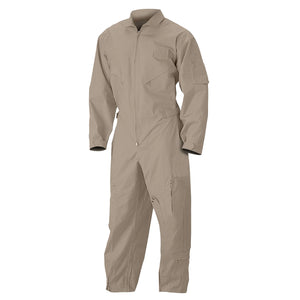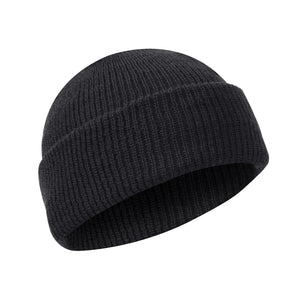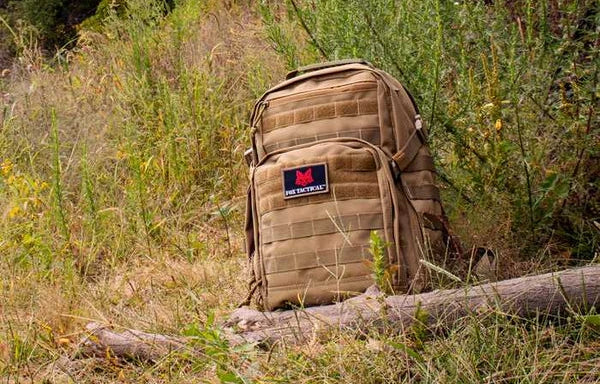In today's unpredictable world, being prepared for emergencies is more important than ever. A well-packed go bag can be a lifesaver, providing you with essential supplies and peace of mind. In this guide, we'll explore the key components of a go bag, offer options for choosing the right bag, and suggest must-have items to include.
What is a Go Bag?
A go bag, also known as a bug-out bag or emergency kit, is a portable collection of essential items you'll need in case of an emergency. Whether it's a natural disaster, power outage, or unexpected evacuation, having a go bag ready ensures you're prepared to leave quickly and safely.

Choosing the Right Bag
To choose the best bug out bag for your needs, it's important to consider several factors that align with your specific requirements and circumstances. Here's a detailed guide to help you make an informed decision:
1. Determine Your Purpose
- Emergency Preparedness: If your primary goal is to be prepared for emergencies like natural disasters, focus on a bag that can hold essential survival gear and supplies.
- Outdoor Adventures: For hiking, camping, or other outdoor activities, look for a bag that offers comfort and durability for extended use.
2. Consider the Size and Capacity
- Small (20-30 liters): Ideal for short trips or minimalistic packing.
- Medium (30-50 liters): Suitable for most people, offering a balance between capacity and portability.
- Large (50+ liters): Best for those who need to carry more gear or for longer durations.
3. Evaluate the Material and Durability
- Water Resistance: Ensure the bag is made from water-resistant materials to protect your gear from the elements.
- Quality Construction: Look for reinforced stitching and durable zippers to withstand wear and tear.
4. Assess Comfort and Fit
- Adjustable Straps: Padded and adjustable shoulder straps, along with a waist belt, can distribute weight evenly and enhance comfort.
- Ventilation: A breathable back panel can help reduce sweating and increase comfort during long hikes.
5. Check for Organizational Features
- Compartments and Pockets: Multiple compartments and pockets can help organize your gear and provide easy access to essentials.
- MOLLE System: A Modular Lightweight Load-carrying Equipment (MOLLE) system allows for customization and attachment of additional gear.
6. Explore Product Options
Here are some recommended bug out bags available on our website:
- Rothco MOLLE 3 Day Assault Pack: This compact and lightweight tactical pack is designed for quick access to your gear, making it an excellent choice for emergency situations.
- Fox Compact MOLLE Hydration Pack: Lightweight, sleek design with customizable storage options, ideal for urban and outdoor environments.
- 5.11 Tactical Rush 100 Backpack: A heavy duty 60L pack that offers a lot of storage and versatility for extended timeframes.
Essential Items for Your Go Bag
When preparing your go bag, it's essential to include a variety of items that ensure your safety and comfort during emergencies. Start with water and non-perishable food to maintain hydration and energy. Next, pack clothing appropriate for the weather, including a durable wool blanket for warmth. Don't forget a first aid kit and personal hygiene items to address health needs. Crucially, include cash for transactions where electronic payment may not be available, as well as identification documents to facilitate travel and access to services. By thoughtfully assembling these essentials, you'll be ready to face any situation that arises.
1. Water and Hydration
- Water Bottles: Pack durable, reusable water bottles. Consider including a portable water filter or purification tablets for emergencies.
- Hydration Bladder: A hydration bladder can be a convenient way to carry and access water on the go.
2. Food and Nutrition
- Non-Perishable Food: Include high-energy snacks like granola bars, nuts, and dried fruits. MREs (Meals Ready-to-Eat) are also a great option.
- Multivitamins: Ensure you have essential nutrients covered with a small supply of multivitamins.
3. Clothing and Shelter
- Weather-Appropriate Clothing: Pack layers, including a waterproof jacket, thermal socks, and a hat. Consider adding a wool blanket for warmth.
- Emergency Shelter: Include a compact tent or tarp, along with a lightweight sleeping bag or emergency bivvy.
4. First Aid and Health Supplies
- First Aid Kit: A comprehensive first aid kit is crucial. Ensure it includes bandages, antiseptic wipes, pain relievers, and any personal medications.
- Hygiene Products: Pack travel-sized toiletries, hand sanitizer, and a small towel.
5. Tools and Gear
- Multi-Tool: A versatile multi-tool can assist with various tasks and repairs.
- Flashlight and Batteries: Ensure you have a reliable flashlight and extra batteries. A headlamp can also be useful for hands-free illumination.
- Fire Starter: Include waterproof matches, a lighter, and fire-starting materials.
6. Communication and Navigation
- Portable Charger: Keep your devices powered with a portable charger or solar charger.
- Map and Compass: While digital navigation is convenient, having a physical map and compass as a backup is wise.





